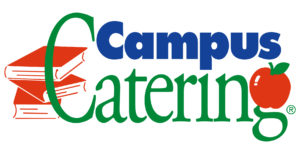What is a Brand?
Simply stated, a brand is a promise to consumers. It communicates what your customer can expect to receive when they purchase your product or service. The brand promise is more than just tangible products and services, more than marketing. It also includes the feelings that consumers get when they use your products and services.
Who is Your Customer?
Identifying your customer is a critical first step in identifying your brand. Our knee jerk response to “who is my customer” is probably “students” but there are several more:

Meeting all of these desires is a challenge but a successful brand will do just that. Failing to meet any one of them can have widespread consequences. For example, a teacher who loves the cafeteria food and speaks well to the students can influence their decision to purchase a meal. But a teacher who hates the food and tells a classroom of 6 year olds not to eat in the cafeteria, has a lot of influence over the success or failure with at least 25-30 students. And when teachers get together and agree (either good or bad) they can have substantial influence over an entire school. When students go home and tell their parents that the “teacher said,” their perceptions can be instantly formed on the very first day of school. Boom. No one wants to eat in the cafeteria all year. And maybe even the next year, and the year after that.
What is YOUR Brand?
How do your customers describe “school lunch?” Think about the perceptions you have seen and heard in the media, in your cafeteria, and in your community from parents, students and staff. What adjectives are used to describe YOUR cafeteria?
- The food nobody else wants to eat (i.e. commodity foods)
- Tasteless cardboard
- Made from scratch
- Fresh
- Overcooked
- Bland
- Yucky
- Delicious
- Colorless
- Colorful
- Mean workers
- They know my name
- Clean (this could be your kitchen, serving area, dining area and/or nearby restrooms)
- Dingy/dark
Early in my career I worked with a couple of other directors to create the Campus Catering brand for our districts. We wanted them to understand that there was new management in town. A Campus Catering logo was designed and used on everything from signage to uniforms to paper goods. Take a look at the logo and see what the logo speaks:

- Bright, primary colors and the books speak of schools, education (and crayons!)
- The apple points to food, health (an apple a day…) and teachers
- The word “campus” is usually used at the college level and speaks of being sophisticated and grown up
- The word “catering” implies upscale food and services reserved for special occasions
Changing long held perceptions about school food service takes continued effort over time. The brand must have integrity so if you are promoting “catering,” the food and service had better reflect that. To be truly successful, these two things need to both be communicated in your brand.
Be Proactive! Three Things You Can do Today in 30 Minutes or Less:
- Create a survey and send it out to parents and students asking them what they like and don’t like about your cafeteria menus. There are a lot of free survey tools such as Google, Survey Monkey and many others.
- Make a list of qualities that describe how YOU want your program to be perceived. Be specific and descriptive.
- Have a contest to create a logo that communicates your brand promise.

Written by Meg Chesley
Meg is the founder and visionary behind Health-e Pro. Meg's career in school food service spans four decades and she is as passionate about serving kids as ever. When she's not dreaming up new software features, Meg enjoys cooking, quilting and sailing. Meg lives in the Pacific Northwest with her husband Chris.